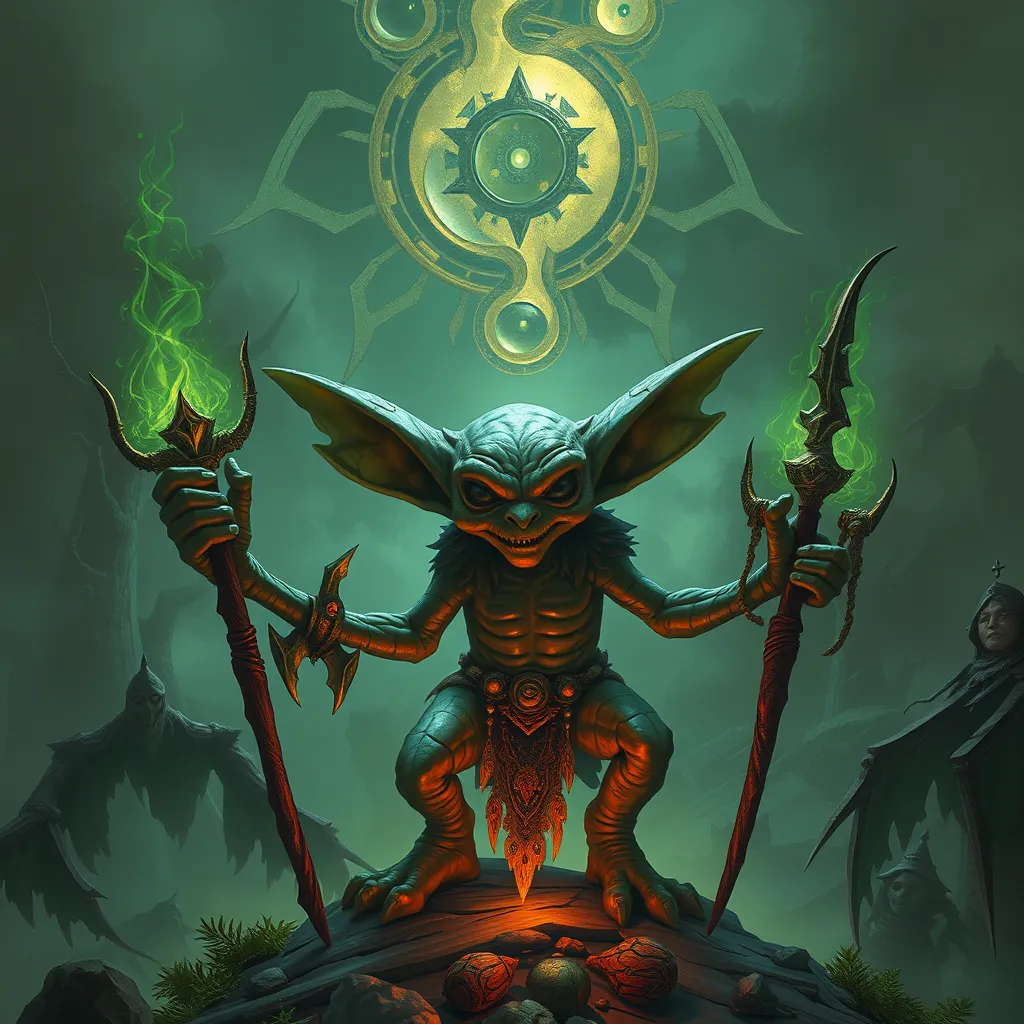Goblin Prophecies: Unveiling the Future Through Goblin Lore
I. Introduction to Goblin Lore
Goblin lore encompasses a vast array of myths, legends, and cultural narratives centered around goblins—mischievous creatures often depicted in folklore as both tricksters and wise beings. The significance of goblin lore extends beyond mere storytelling; it serves as a lens through which we can understand human fears, desires, and the complexities of the natural world.
Historically, goblins have roots in various cultures, with origins tracing back to early medieval Europe, where they were often blended into the folklore of different regions. In these tales, goblins could be found lurking in dark forests or residing in caves, embodying the duality of nature’s allure and danger. Their narratives often reflect societal values and fears, demonstrating the importance of these mythical beings in cultural storytelling.
Across cultures, goblins play a multifaceted role. In some traditions, they are seen as benevolent guardians of treasures, while in others, they are malevolent tricksters. This duality highlights their significance in the moral and ethical lessons embedded in folklore.
II. The Nature of Goblin Prophecies
In goblin culture, prophecies are understood as revelations about the future, often conveyed through cryptic language and symbolic imagery. These prophecies serve as cautionary tales or guiding principles, influencing the actions of both goblins and humans. Unlike other forms of divination, which may rely on rituals or specific tools, goblin prophecies often emerge spontaneously, reflecting the chaotic nature of goblin existence.
Common themes in goblin prophecies include:
- Transformation and change
- Nature’s balance and upheaval
- Conflict between goblins and humans
- Wisdom gained through folly
III. Famous Goblin Prophecies Throughout History
Throughout history, several notable goblin prophecies have emerged, leaving a lasting impact on societies. For instance, one famous prophecy foretold the rise of a great leader among goblins, who would unite the clans during a time of strife. This prophecy not only shaped the identity of goblin communities but also influenced human perceptions of goblins as formidable beings.
Case studies of specific prophecies reveal their outcomes and societal effects. One such prophecy predicted a catastrophic event that would befall a human kingdom if they continued to disregard the goblins’ warnings about environmental degradation. When the foretold disaster struck, it reinforced the goblins’ role as custodians of nature and emphasized the need for harmony between humans and the natural world.
IV. Goblin Prophecies in Literature and Media
The representation of goblin prophecies in folklore and fairy tales often highlights their mysterious and whimsical nature. In classic tales, goblins may deliver prophecies to heroes, setting them on quests that reveal deeper truths about their character and the world around them.
Modern adaptations in books, films, and games have further explored goblin prophecies, often reinterpreting them to fit contemporary narratives. For example, in popular fantasy series, goblins are sometimes portrayed as wise mentors who provide prophetic insights to the protagonists, challenging the traditional views of goblins as mere tricksters.
The influence of popular culture has transformed perceptions of goblin lore, making it more accessible and intriguing to new audiences. This evolution reflects a broader trend in how ancient myths are revitalized and reimagined in today’s storytelling landscape.
V. The Interpretation of Goblin Prophecies
Interpreting goblin prophecies involves methods that blend both intuition and tradition. Goblins, as well as humans who interact with them, often rely on a combination of dream interpretation, symbolic analysis, and communal storytelling to decipher these prophecies. The role of shamans and seers is pivotal in this process, as they act as intermediaries between the spiritual and physical realms.
However, challenges and controversies exist in prophecy interpretation. Different interpretations can lead to conflicting actions within goblin communities, as individuals may have varying beliefs about the meaning and implications of a prophecy. This divergence can sometimes result in societal discord or misunderstandings between goblins and humans.
VI. Goblin Prophecies and Their Connection to Nature
The relationship between goblin lore and the natural world is profound. Many goblin prophecies are intricately linked to environmental changes and disasters, reflecting a deep-seated belief that goblins are guardians of the earth. Prophecies may predict events such as droughts or floods, emphasizing the need for respect and balance with nature.
These connections underscore the importance of nature in goblin culture, where the landscape itself often serves as a character in their stories. The physical environment shapes the goblin experience, and their prophecies often serve as reminders of humanity’s interconnectedness with the natural world.
VII. Critiques and Skepticism Surrounding Goblin Prophecies
Despite the rich tradition of goblin prophecies, debates regarding their validity persist. Skeptics and rationalists question the reliability of prophecy as a form of foresight, often attributing such beliefs to superstition or cultural folklore. They argue that the subjective nature of interpretation can lead to confirmation bias, where individuals only recognize outcomes that align with their beliefs.
However, the cultural significance of belief in prophecies cannot be overlooked. For many, these prophecies provide a sense of hope, guidance, and understanding in an unpredictable world. They serve as cultural touchstones that foster community and shared identity, even amidst skepticism.
VIII. Conclusion: The Legacy of Goblin Prophecies
The enduring appeal of goblin lore in contemporary society speaks to its rich tapestry of themes and narratives. Goblin prophecies continue to inspire storytelling, reminding us of the complexities of belief and the human experience. As new generations engage with these tales, they adapt and reshape the narratives to reflect their own realities.
Looking ahead, the future implications of goblin prophecies in storytelling and culture are vast. As environmental concerns become increasingly pressing, the themes of nature and prophecy may resonate more deeply, prompting discussions about our relationship with the world around us.
In conclusion, the intersection of myth, belief, and the future encapsulates the essence of goblin prophecies. They remind us that stories, no matter how fantastical, reflect our hopes, fears, and the enduring quest for understanding in an ever-changing world.




